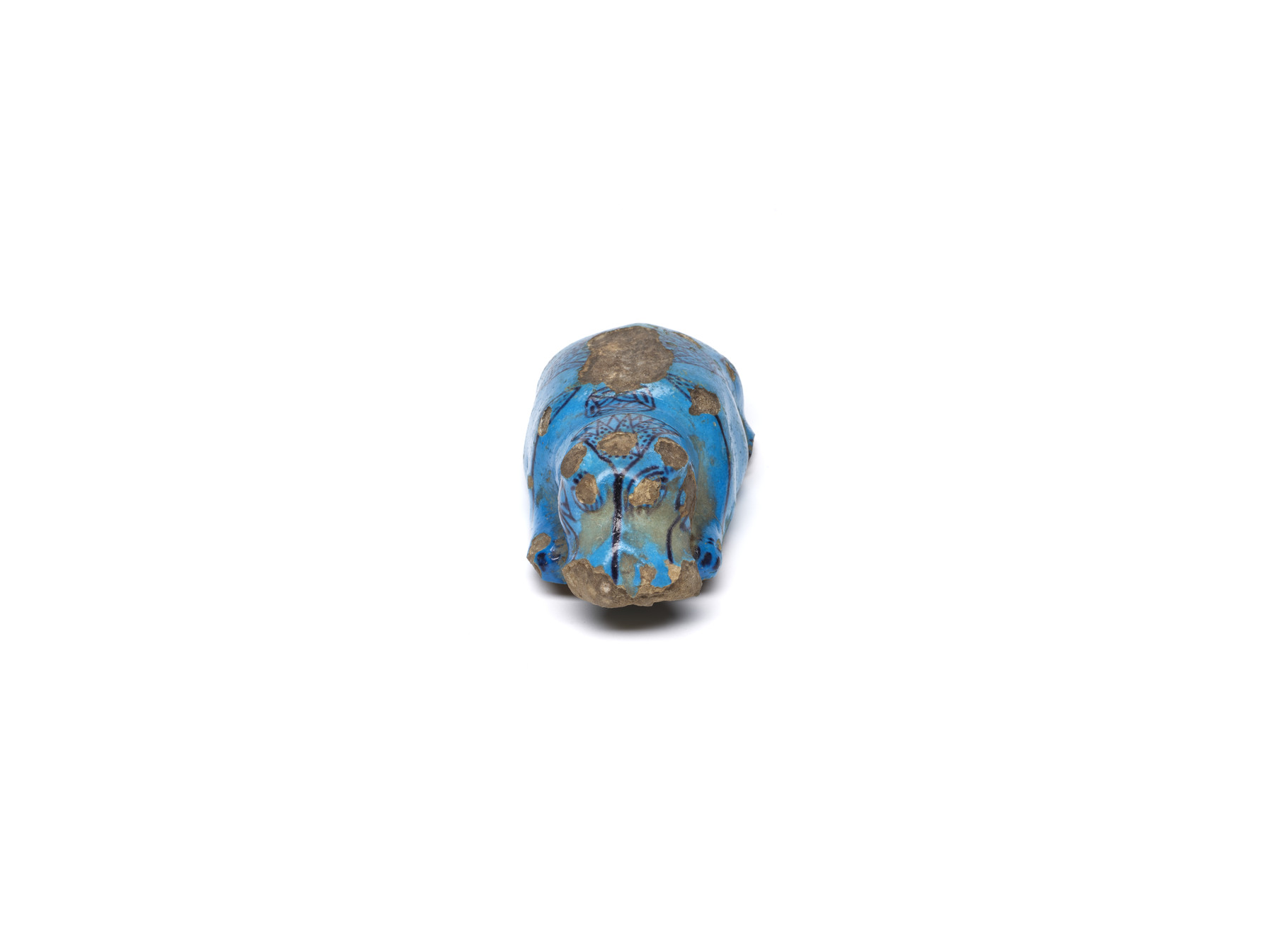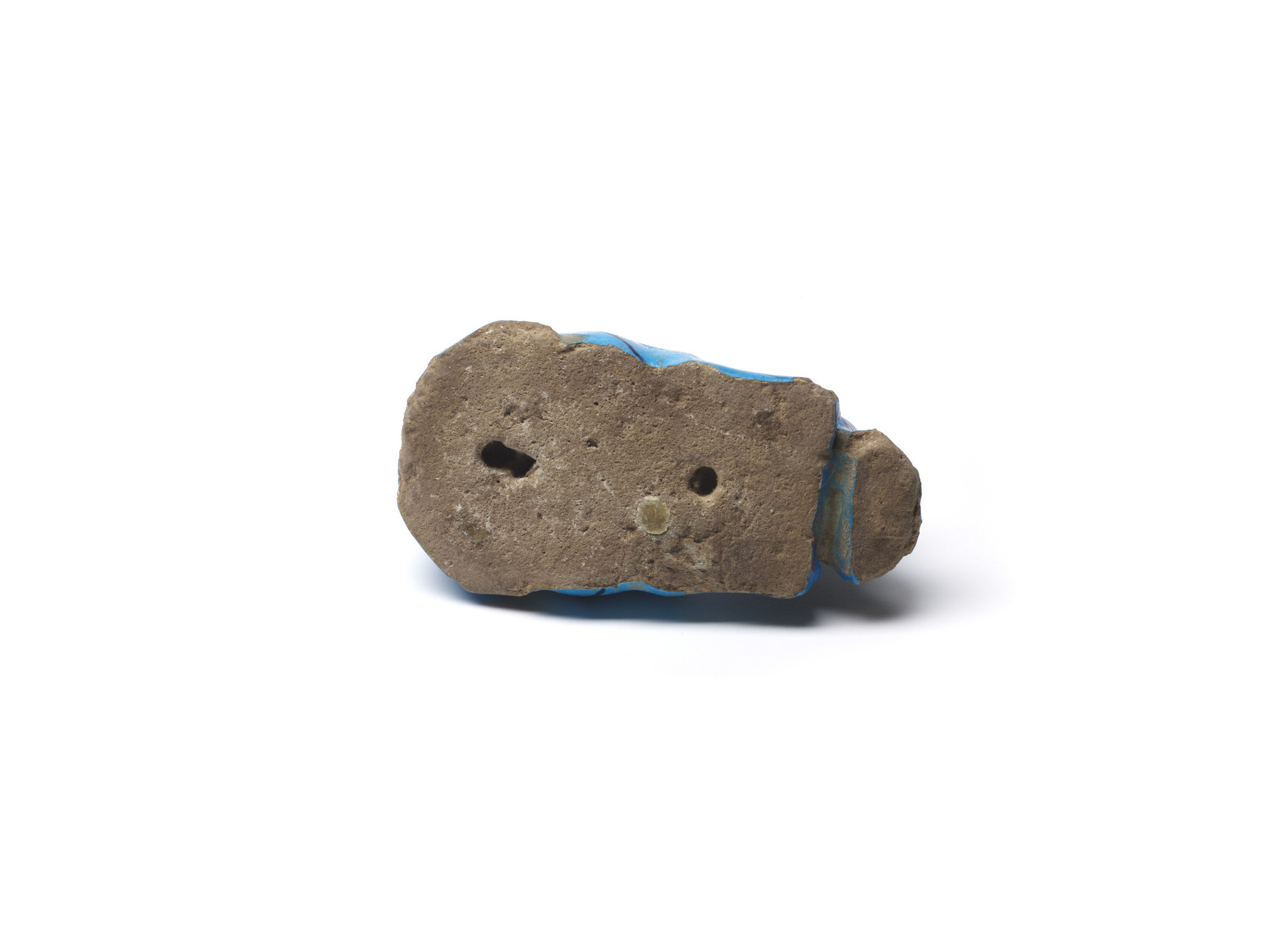Hippopotamus with Aquatic Flower Decoration
(Ancient Egypt and Nubia )
This blue faience figurine is in the shape of a walking hippopotamus, although its legs have been removed. The painted black lotus buds and aquatic plants on its back evoke the hippopotamus’s Nile environment. A hippopotamus’s back rising out of the surface of the water evoked the first mound of creation from which the sun god emerged and life began. Lotus buds, too, were connected with creation and renewal, and thus this figurine was probably associated with rebirth and regeneration. Blue faience hippopotamuses were popular in burials of the Middle Kingdom through the Second Intermediate Period and could assist the deceased in the process of rebirth. The legs of this hippo were deliberately removed in ancient times to safeguard the deceased. The power of this creature was so great that preventative measures had to be taken to ensure it did not attack the deceased in the afterlife. Ancient Egyptians saw hippopotamuses as multifaceted, almost contradictory creatures. They were feared for their power and violence but also worshipped for their protection and strength. Hippopotamuses were associated with Taweret, the nurturing goddess who protected women and children, and Seth, the powerful god of disorder and violence.
Provenance
Provenance (from the French provenir, 'to come from/forth') is the chronology of the ownership, custody, or location of a historical object. Learn more about provenance at the Walters.
Rev. William MacGregor, Tamworth, Staffordshire, by 1898; Sale, Sotheby, Wilkinson & Hodge, London, June 26-29 and July 4-6, 1922, no. 261; Dikran Kelekian, Paris and New York, 1922, by purchase; Henry Walters, Baltimore, 1923, by purchase; Walters Art Museum, 1931, by bequest.
Exhibitions
| 2021-2022 | Betty Cooke: The Circle and the Line. The Walters Art Museum, Baltimore. |
Conservation
| Date | Description | Narrative |
|---|---|---|
| 8/24/1998 | Examination | survey |
Geographies
Egypt (Place of Origin)
Measurements
H: 1 7/8 × W: 5 1/2 × D: 2 7/8 in. (4.76 × 13.97 × 7.3 cm)
Credit Line
Acquired by Henry Walters, 1923
Location in Museum
Accession Number
In libraries, galleries, museums, and archives, an accession number is a unique identifier assigned to each object in the collection.
In libraries, galleries, museums, and archives, an accession number is a unique identifier assigned to each object in the collection.
48.401












